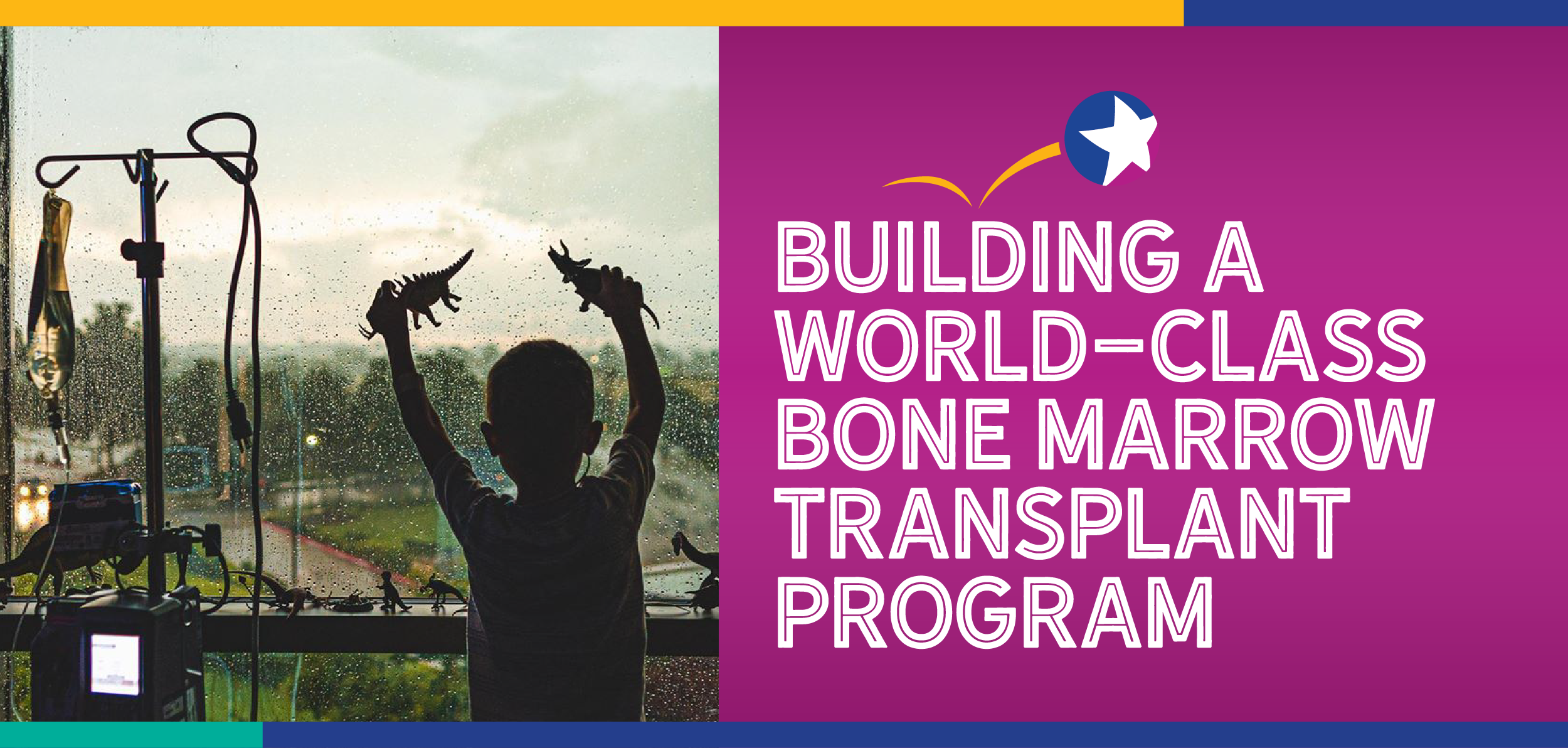
Every year, thousands of families across the country hear the words no family is ever prepared to hear: “Your child has cancer.” Once the shock of this news subsides there is little time for heartbreak. As so many of these families know, navigating a childhood cancer diagnosis can overwhelm even the most strongly supported of families. At Dell Children’s, we’re on a mission to be the support Central Texas families rely on to get through their cancer journeys.
At the forefront of the continued search for a cure is our Children’s Blood and Cancer Center (CBCC). As a leading pediatric cancer care provider, the CBCC offers state-of-the-art treatments, compassionate care, and unwavering support to children and their families navigating the complexities of cancer. From groundbreaking research to comprehensive family services, the CBCC is committed to treating cancer and transforming the lives of those forever changed by a diagnosis.
September is National Childhood Cancer Awareness Month and this month, we’re spotlighting the efforts of our CBCC and the team of medical professionals who’ve dedicated their lives to finding cures. We sat down with Kaye Schmidt, Service Line Director at the CBCC to learn more about the progress being made and the hope for the future.
Q: How many patients does Dell Children’s CBCC currently serve?
A: Including our outreach clinics, we saw a total of 12,334 visits in the last fiscal year, with 2,634 unique patients. On any given day, we can have as many as 75 kids in the clinic, with an average of about 50. This represents an 8.7% growth from the previous year.
Q: How many outbound patients are we currently sending out of Austin for treatment?
A: For transplants, we average about 8 to 10 patients per year being sent out of Austin. We anticipate this number will grow as we expand our capabilities. Initially, we’ll start with autologous transplants—where the patient’s own cells are used—around five per year. Eventually, we aim to progress to allogeneic transplants, which involve using donor cells, and then to CAR-T and gene therapies. Dr. Mian estimates that over time, we could see 20 to 25 patients per year with these advanced therapies, but as treatments evolve, those numbers may increase.
Q: Can you provide an overview of the steps required to launch a world-class bone marrow transplant (BMT) program? Where are you in that process?
A: We started by finding a partner to perform apheresis, which is the process of removing blood or stem cells from the patient and returning them to the body. We are currently contracting with We Are Blood, our local blood bank, and Carter Blood Care, which will process and store our cells. We’ve also submitted a contract to the Center for International Bone Marrow Transplant Research (CIBMTR), a requirement for the accreditation we need.
Our goal is to have all of these foundational elements in place by the end of the calendar year. Simultaneously, we are in the process of developing a large number of standards of practice (SOPs) for FACT accreditation—the gold standard for BMT programs. We’ve already drafted about 30 SOPs, and we’ve hired a data analyst to manage the CIBMTR database and track our outcomes.
Once the foundational elements are in place, we will begin with autologous transplants, where we collect cells from the patient and use them after high-dose therapy. This is typically used for conditions like medulloblastoma and neuroblastoma. We need to perform at least five successful autologous transplants, with good data to support our methods, before applying for FACT accreditation, which can take 12 to 18 months to obtain.
If everything goes according to plan, we hope to be in the accreditation phase by early to mid-2027. Once accredited, we can expand to more complex transplants like allogeneic and eventually offer CAR-T and gene therapies.
Q: How important is philanthropy in this work?
A: Philanthropy is critical, especially in pediatrics, where the model is to build the program before the volume grows. Currently, philanthropic support is helping fund staff development and education. In the adult world, volume typically grows first, followed by program expansion, but in pediatrics, we need to build the program first and then our patient volume will grow.
As our program grows and we achieve accreditation, we will likely need to expand our team, adding more dedicated practitioners and possibly recruiting additional physicians. Right now, we have a core group of nurse practitioners, nurses, and physicians developing the program in addition to their other duties. This will continue to increase expertise throughout the department.
Since Schmidt’s arrival 19 months ago, she believes the CBCC is making real progress. “It’s a slow process, but we’re on the right track, and we will get there.”
As a leading pediatric cancer care provider, the CBCC at Dell Children’s not only offers state-of-the-art treatments and compassionate care but also unwavering support to children and their families navigating the complexities of cancer. In honor of National Childhood Cancer Awareness Month, you can help us continue to perform groundbreaking research and offer comprehensive family services with a donation that will help the CBCC continue to transform the lives of patients who rely on them for a cure.
